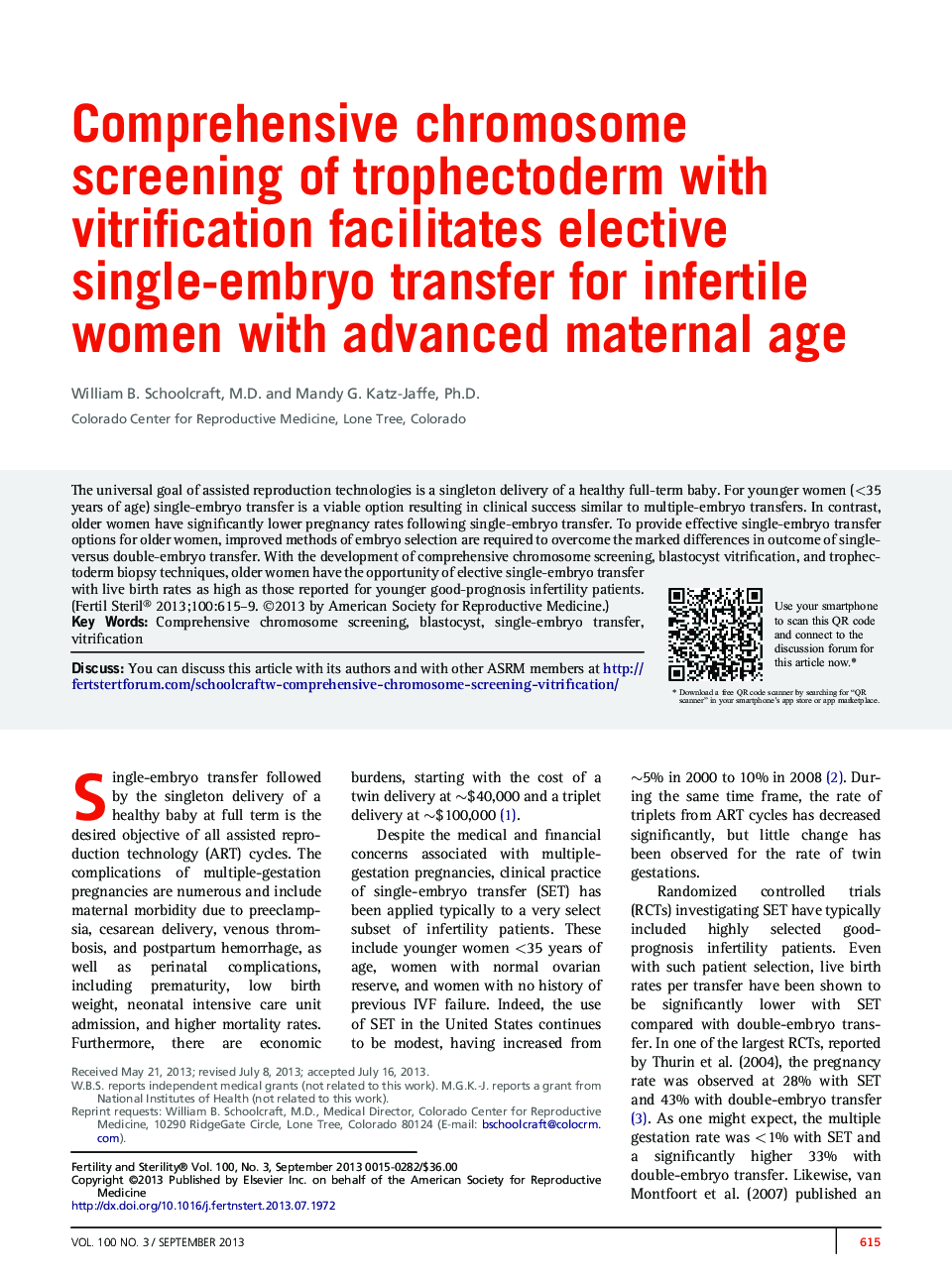| Article ID | Journal | Published Year | Pages | File Type |
|---|---|---|---|---|
| 3934811 | Fertility and Sterility | 2013 | 5 Pages |
The universal goal of assisted reproduction technologies is a singleton delivery of a healthy full-term baby. For younger women (<35 years of age) single-embryo transfer is a viable option resulting in clinical success similar to multiple-embryo transfers. In contrast, older women have significantly lower pregnancy rates following single-embryo transfer. To provide effective single-embryo transfer options for older women, improved methods of embryo selection are required to overcome the marked differences in outcome of single- versus double-embryo transfer. With the development of comprehensive chromosome screening, blastocyst vitrification, and trophectoderm biopsy techniques, older women have the opportunity of elective single-embryo transfer with live birth rates as high as those reported for younger good-prognosis infertility patients.
